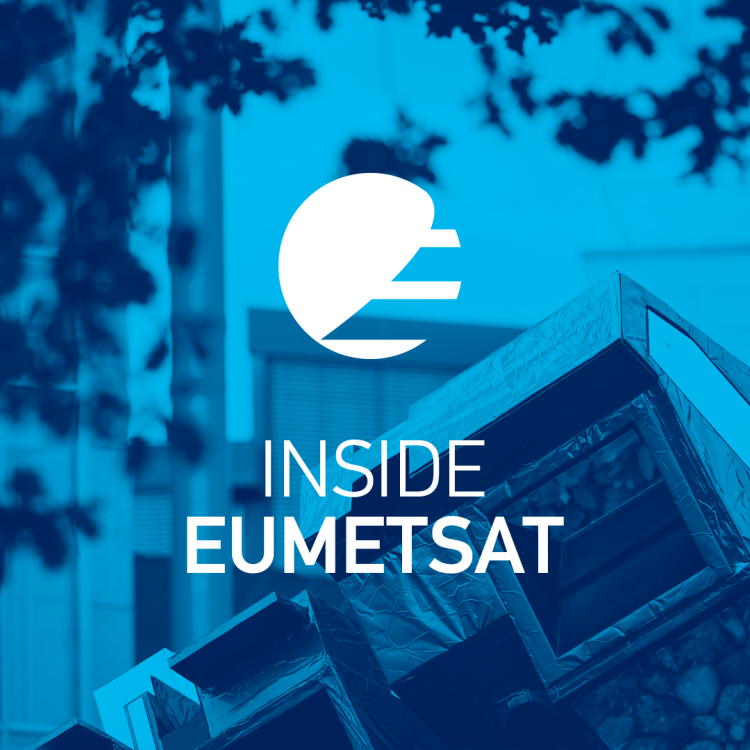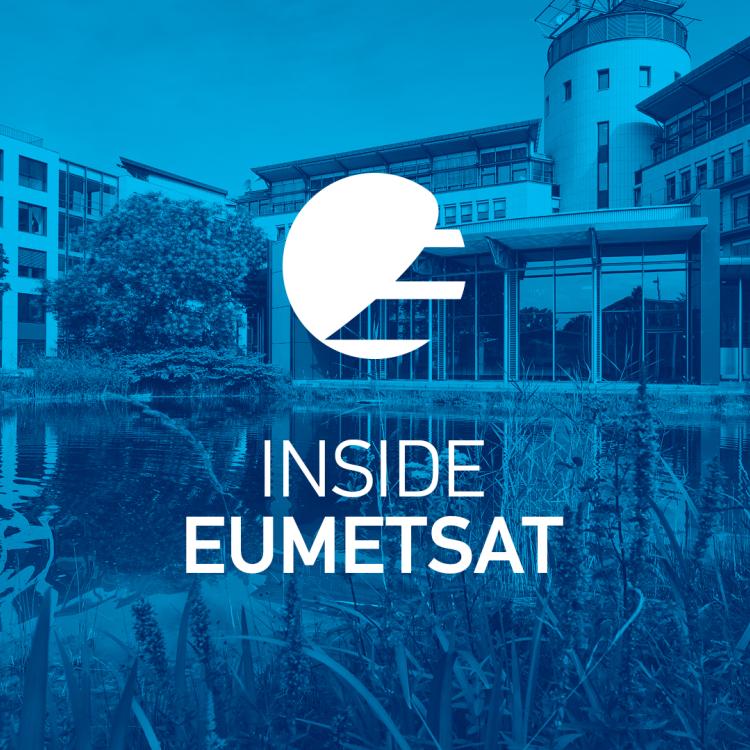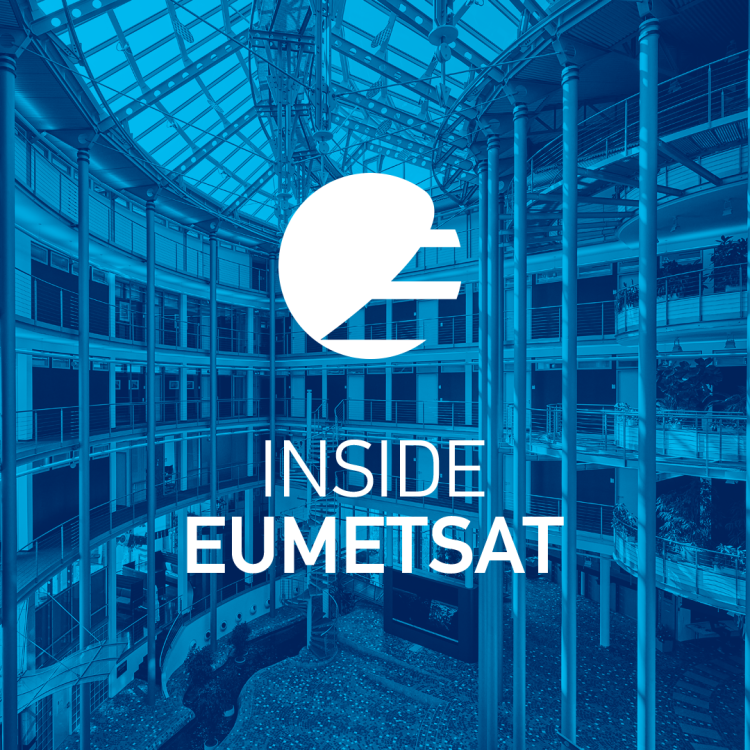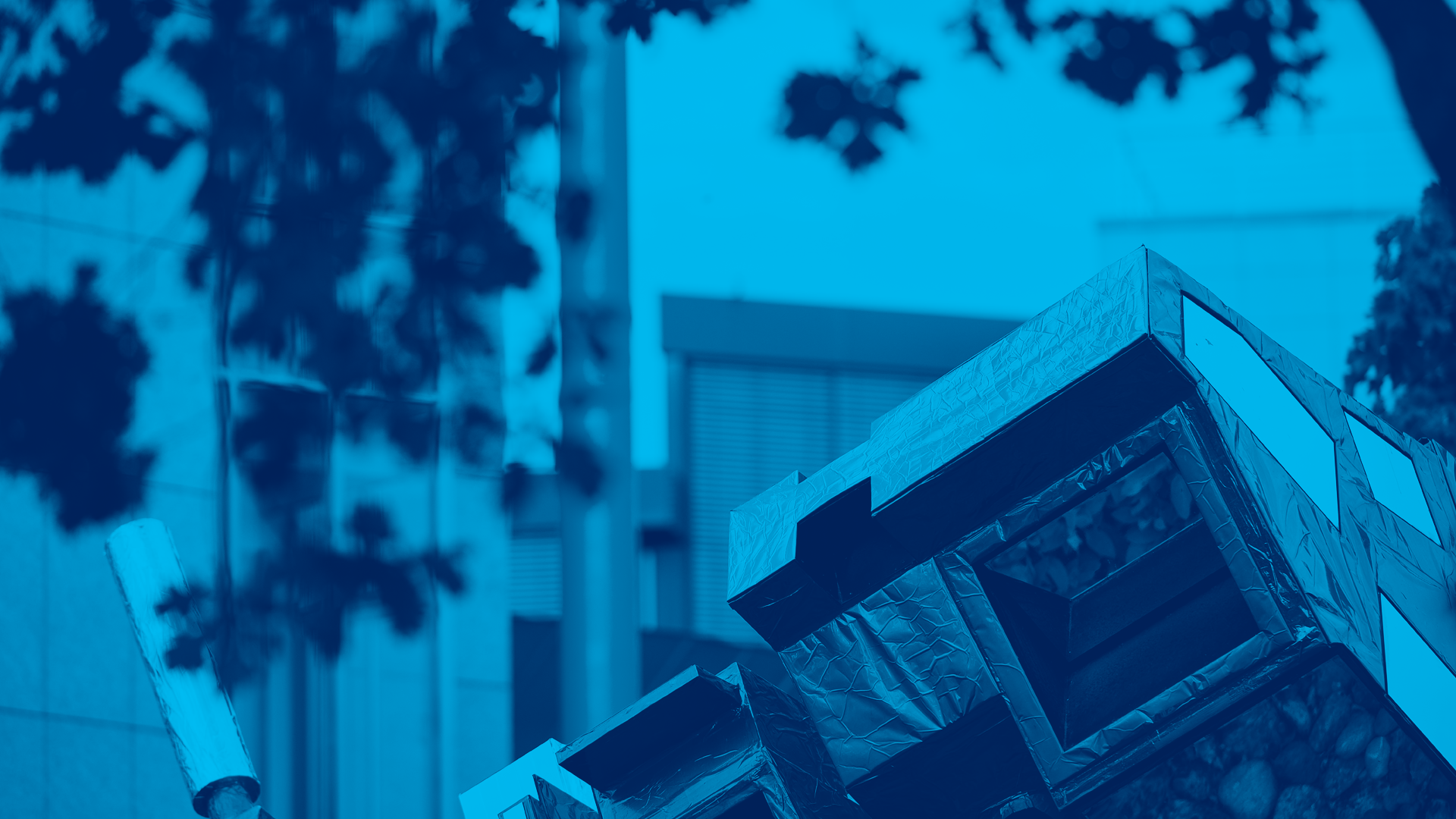
Inside EUMETSAT: meet Mike and Julia
Inside EUMETSAT interviews Mike Williams and Julia Hunter-Anderson

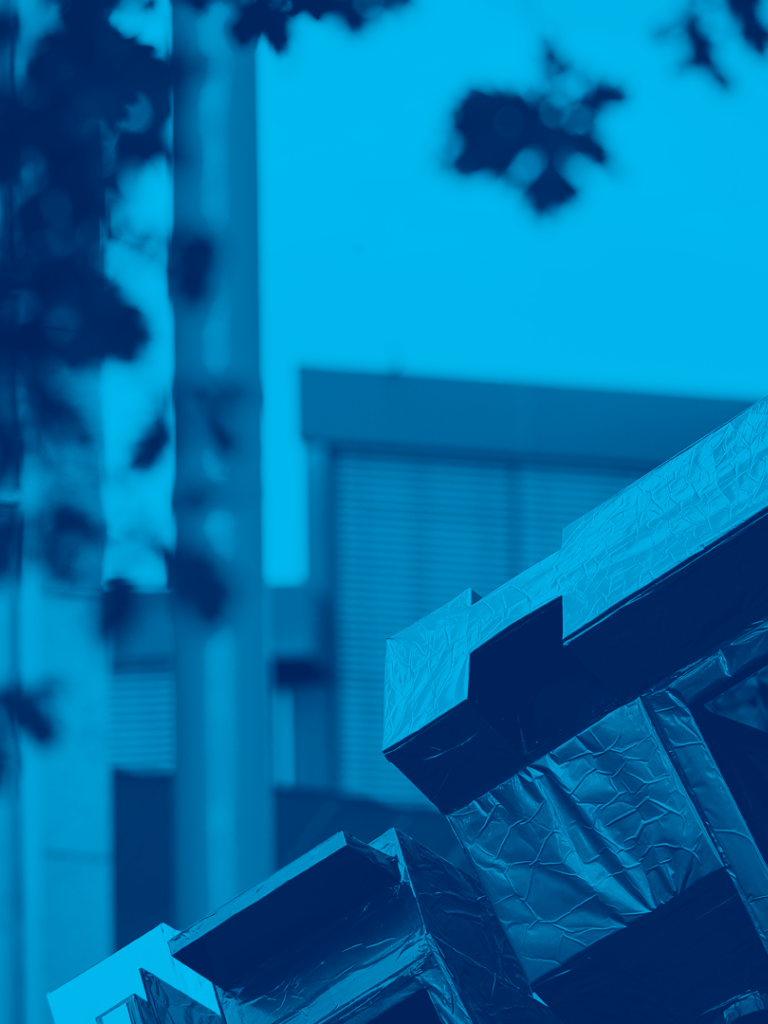
Inside EUMETSAT returns this month with another in-depth interview featuring two more of our outstanding EUMETSAT colleagues: Mike Williams and Julia Hunter-Anderson! Mike started at EUMETSAT in November of 1994, while Julia joined the team more recently in October of 2020.
23 June 2021
23 June 2021
Inside EUMETSAT is a series of articles for the EUMETSAT Science Blog that will be published over the next weeks and months. Each month, we’ll introduce you to two valued members of our team: one newcomer, who joined in the past year, and one senior staff member who has spent years at the organisation.
In a time that’s far from ordinary, we hope to use this opportunity to introduce our readers to some of the diverse and friendly faces they might encounter in the course of a normal day at EUMETSAT. It’s our goal to appreciate and celebrate all the different and talented people who work here. We hope these articles will help you discover—or rediscover—EUMETSAT.
Meet Mike and Julia!


What is your current role at EUMETSAT? What are your current duties?
Mike Williams: I am the Head of Flight Operations (FLO) which is part of the operations (OPS) department at EUMETSAT. We operate all the in-orbit spacecraft that EUMETSAT is responsible for from the mission control centre at EUMETSAT.
With so many satellites and instruments to operate at EUMETSAT – flight operations can be very interesting and dynamic, from dealing with routine operations to complicated satellite manoeuvres. The most challenging tasks require a lot of planning and coordination. Particularly, major spacecraft activities need to be coordinated both inside EUMETSAT, and outside with our Satellite Application Facilities (SAFs), NOAA, NASA, the European Space Agency, our other operational partners, and finally with the users of our data.
On top of this, FLO also supports the programme preparation and development (PRD) department in the preparations for the operations of new space and ground systems, and in the preparations for the launch of recurrent spacecraft where a system is already operational. At the moment, engineers and analysts from FLO are working on preparations for the launch of Meteosat Third Generation MTG-I1 and S1, Metop-SG A1 and B1, the Sentinel-3C launch, and we’re just planning the start of our involvement in the Copernicus Anthropogenic Carbon Dioxide Monitoring (CO2M) mission – from early next year.
Preparing a new system, or launching a recurrent satellite, and the associated simulations, rehearsals, low earth orbit phases (LEOPs), commissioning, and transition into operations are always challenging times for FLO – working in parallel operating existing systems whilst preparing for and operating new ones – EUMETSAT has very ambitious plans for the coming years with a high launch cadence being part of our planning baseline over the coming 5 years.
Julia Hunter-Anderson: I am the MTG System Engineer and LEOP (Launch and Early Orbit Phase) Manager. I split my time between system engineering tasks, primarily for the Meteosat Third Generation MTG-S satellite mission, managing system level requirements, supporting design definition and verification, as well as supporting the preparation of the MTG-I1 commissioning. In mid June I also formally took over responsibility for the MTG LEOP management. This involves procuring the services of an external LEOP Service Provider, to manoeuvre the MTG satellites from their launcher injection orbit of a few 100km altitude, through a complicated set of orbit-raising manoeuvres up to the geostationary ring, at about 36000km altitude, ready for EUMETSAT to start the commissioning operations. To support the LEOP-SP we have many tasks during the preparation phase - organising validation test campaigns with the satellite on the ground, reviewing the mission analysis and expected operations, monitoring the verification status of the LEOP System development, delivering a satellite simulator, database, etc. This involves a lot of teamwork and coordination - both internally within EUMETSAT and with our space segment procurement partner ESA. During the LEOP execution of about 10 days, and an intensive simulations training campaign in the months before launch, we join the LEOP-SP team to represent EUMETSAT interests, particularly if there are any critical problems in flight.
Do you normally interact with your interview counterpart and his/her division? Have you personally worked with him/her?
MW: Part of the flight operations range of duties is to support the preparations for new systems and satellites – so we work very closely with the MTG Programme in the GEO (geostationary) division, EPS-SG in the LEO (low Earth orbit) division and the Copernicus development projects in the Copernicus mission development (CMD) division.
The first time I met Julia was when we both arrived at EUMETSAT at the end of 1994. She was working with me and the rest of the operations team preparing for the handover from the European Space Operations Centre (ESOC) and the subsequent operations of Meteosat-5 and 6. This was a great time to be at EUMETSAT, being part of its transition to an operational organisation. We also worked very closely on getting ready for the Meteosat Second Generation MSG-1 launch, spacecraft operations, and the status of the core ground segment facilities. We managed to achieve readiness to launch the satellite in autumn 2002 – and we learnt many interesting things about operating a spacecraft with complex on-board autonomy, and an instrument of the sophistication level of SEVIRI.
Julia left the organisation around that time and since she re-joined EUMETSAT, I have had the opportunity to liaise with her over the preparation and execution of the most recent MTG-I1 system validation test (SVT), where she was working with the spacecraft operations preparation team from FLO in carrying out the test and coordinating the launch and early orbit phase (LEOP) aspects of the test with the LEOP service provider.
JHA: Yes, in all of my roles there is a strong link with Mike's Division – FLO are part of an integrated GEO/Operations (OPS) team preparing the MTG system for routine operations. As such, I receive invaluable support to all of my roles; from analysis of operations requirements deviations, to definition of commissioning operations, and provision of operations deliverables for our LEOP Service Provider. As one of our OPS customers, it's important for me to understand the challenges that FLO will face in routine operations, and I value the experience and history that Mike, and Gareth in the future, bring to the partnership.
I first met Mike in 1994 when I joined the team in Pallaswiesenstrasse as an operations preparation engineer, to prepare for the transfer of Meteosat operations from ESOC to EUMETSAT. I remember that the EUMETSAT main building was a concrete shell, apart from the control centre at the back.
It was my first operations role, having come from the world of spacecraft, ground segment and operations design. As a young engineer I was in awe of Mike and colleagues, but couldn’t have asked for a better training ground. The team spirit and a ‘can-do’ attitude was fantastic; including a few months working shifts to babysit the MTP (Meteosat Transition Programme) satellite in support of our system validation. It soon became clear that this was a special social as well as working environment, as bands, choirs, running groups, book clubs, the BBQ and others started to pop up. Everyone knew everyone else. My expectation of a six- month contract at EUMETSAT turned into 13 years!
In that time I moved onto the development of the MSG System (Meteosat Second Generation), at various times leading the integrated GEO/OPS team for satellite & system operations preparation activities until handover of the MSG-1 & MSG-2 system to OPS. EUMETSAT was growing rapidly, but I continued to liaise with Mike and his Flight Operations team throughout. Mike’s calm presence, keen sense of what really matters, and faith in my ability to help deliver and maintain a healthy spacecraft/mission, was always appreciated.
Our paths have continued to cross now that I’m back on MTG. It will be the end-of-an-era to see Mike retire, but his legacy is evident and the lessons I’ve learnt from Mike along the way will continue to guide me as we head rapidly towards MTG-I1 launch!
What has been your biggest challenge during COVID and lockdown? Do you feel supported by EUMETSAT?
MW: During the COVID and lockdown periods the biggest challenge was to work out what form our response would take, and how to implement it. The response of the teams was very good, showing a high degree of flexibility and collaboration both in OPS, and the rest of the organisation. I think EUMETSAT did what it could – for example making infrastructure widely available for working off-site.
JHA: The most challenging aspect has been moving my teenage family to Germany whilst also having to manage schools and exams. With the added complication of navigating borders in a chaotic post-Brexit/COVID world, we have had to improvise on what 'home' means. Thankfully, I am not new to EUMETSAT or to the area, having worked here before (1994 to 2007, so I know Mike well). However, things have changed and I've really appreciated the support from the excellent relocation service, colleagues, and human resources when I've asked for help.
Where do you usually work from? How do you interact with your colleagues?
MW: These days I am usually at home – communicating via email, Webex and Zoom for meetings, Skype messages and calls, and phone calls.
JHA: I usually work from home, which until last week has been a lovely little AirBnB backing on to the fields in Eberstadt. I'm lucky that we have now moved next to the Eberstadt forest, and I can see wildlife from my home-office window. Interaction with colleagues has been almost exclusively virtual since re-joining EUMETSAT – but Webex, Skype, Zoom have all become second nature and it definitely has some advantages when trying to juggle many work roles. However, as a long-time teleworker in the past, I said I would never voluntarily telework full time again – little did I know that there was a pandemic on the horizon! I have really missed being on site at EUMETSAT HQ with my colleagues, and friends. I miss the EUMETSAT buzz. So I really enjoyed being on site recently for a formal LEOP review, socially distanced with only a few colleagues of course. I know it's not the same as normal, but it's a start.
What has your experience of EUMETSAT been during normal, non-pandemic times? Why do you like working here?
MW: My experience of working at EUMETSAT has been very positive – it's a great working environment. Many parts of EUMETSAT play their role in operations and this leads to the development of a very strong collaborative approach. It’s part of our culture.
Indeed, EUMETSAT in general and operations in particular are very heavy on teamwork – we have built strong teams who are very engaged with their responsibilities.
Having worked here for almost 30 years, I have a long list of memorable moments.
For example, all the launches and the subsequent spacecraft activation and check-out are very special for their own reasons – from the Meteosat-7 launch event, where the rainforest was recreated in the foyer of the HQ building, to the SEVIRI first image acquisition where a special lunch was organised – again in the foyer – to celebrate that first image which had not quite arrived yet! And also unforgettable was the Metop-A launch where three countdowns were aborted in June 2006 – then tried again in September where we got off the ground at the second attempt.
What has been your experience of EUMETSAT been like so far? Were you able to come to HQ and meet colleagues face-to-face?
JHA: Having worked in EUMETSAT as a staff member many years ago, and more recently as a consultant working mostly off-site, I was really looking forward to being back on site permanently, especially to see how EUMETSAT has changed and how it has stayed the same. I didn't have much time to settle in. I think I was thrown straight 'in at the deep end', which I love, but it was a bit of a blur. In hindsight, those few days in October were really special – bumping into old friends in the corridor and meeting a few new colleagues. I do worry that most new colleagues I only know by voice or their Webex avatar. For those colleagues, I probably won't recognise you in person, sorry!
What book are you currently reading?
MW: I've just finished a book called 'The Spanish Civil War' - no prizes for guessing what that was about – it was a bit depressing. I've just moved on to “The Assault on Truth” – if you'd like to know what that's about just get in touch!
JHA: "Gardening for the Zombie Apocalypse" by Isabel Lloyd and Phil Clarke. Useful!
Which weather phenomenon represents you best?
MW: A nice, optimistic-looking, sunny morning.
JHA: Spring (if a season can be considered a phenomenon!).
If expense were not a concern, what would you like to do in the next 5 years?
MW: Travel broadens the mind ... a little more travelling would be nice.
JHA: Walk the Nakasendo Highway from Tokyo to Kyoto during autumn, following the momiji and treating myself to staying in traditional Ryokan, with onsen and kaiseki food along the way.
According to you, what is the most exciting science/technology innovation in the last century?
MW: The Internet, or maybe air travel - they've both had the effect of shrinking our world.
JHA: The Internet.
